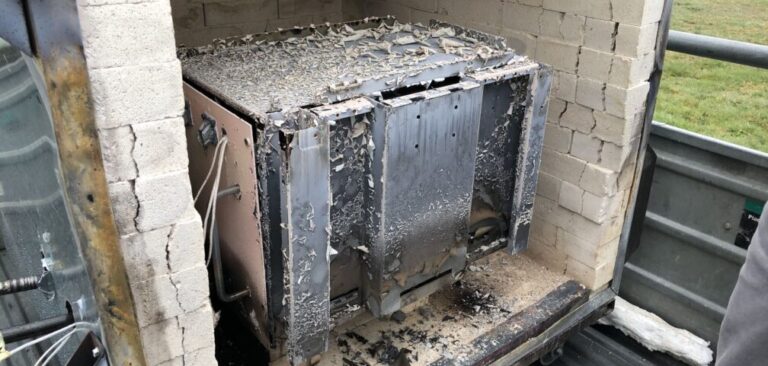Canadian marine battery specialist Sterling PlanB says it has conclusively demonstrated that direct exposure of its battery module to a 950°C fire can be successfully managed by its unique thermal management system, which passed the A60 fire survivability test thanks to the effectiveness of its unique liquid cooling system.
The A60 test examines risks such as a fire in the machinery space adjacent to the lithium energy storage system, and the potential for a battery to contribute its considerable energy to the intensity of an existing fire. If a generator fails and causes a fire, for example, a nearby battery could go into thermal runaway (fire) due to the extremely high temperatures that would surround it, increasing the intensity of the fire and posing an explosion risk.
On March 24, the engineering team at Sterling PlanB conducted an A60 fire ‘survivability’ test of the BBU battery module, certified by LabTest Certification. It verified that the BBU was able to withstand a prescribed heat level for a defined period of 60 minutes and remain operable to cool the battery and prevent charged cells from entering thermal runaway – a chain reaction that represents a major fire risk for lithium-ion batteries.
This, states the company, demonstrates that it is possible to build a battery that is in effect its own battery room with A60-rated protection from any fire in the machinery space.
Sterling PlanB CEO Brent Perry commented, “When it comes to any type of propulsion system, the safety of the vessel and its crew is the single most important concern. Full stop. However, in 2021 we’re still seeing uncontrolled battery fires on board type-approved passenger vessels. This isn’t just unconscionable, but it’s avoidable.
“This testing proves that it’s possible to create batteries that can survive fires on board without contributing their energy to an external fire, and that can prevent thermal runaway.
”This is a huge leap forward for battery technology. We believe that every ship – no matter its size – can benefit from energy storage to save fuel, reduce emissions and increase performance. This brings that reality one step closer.”



